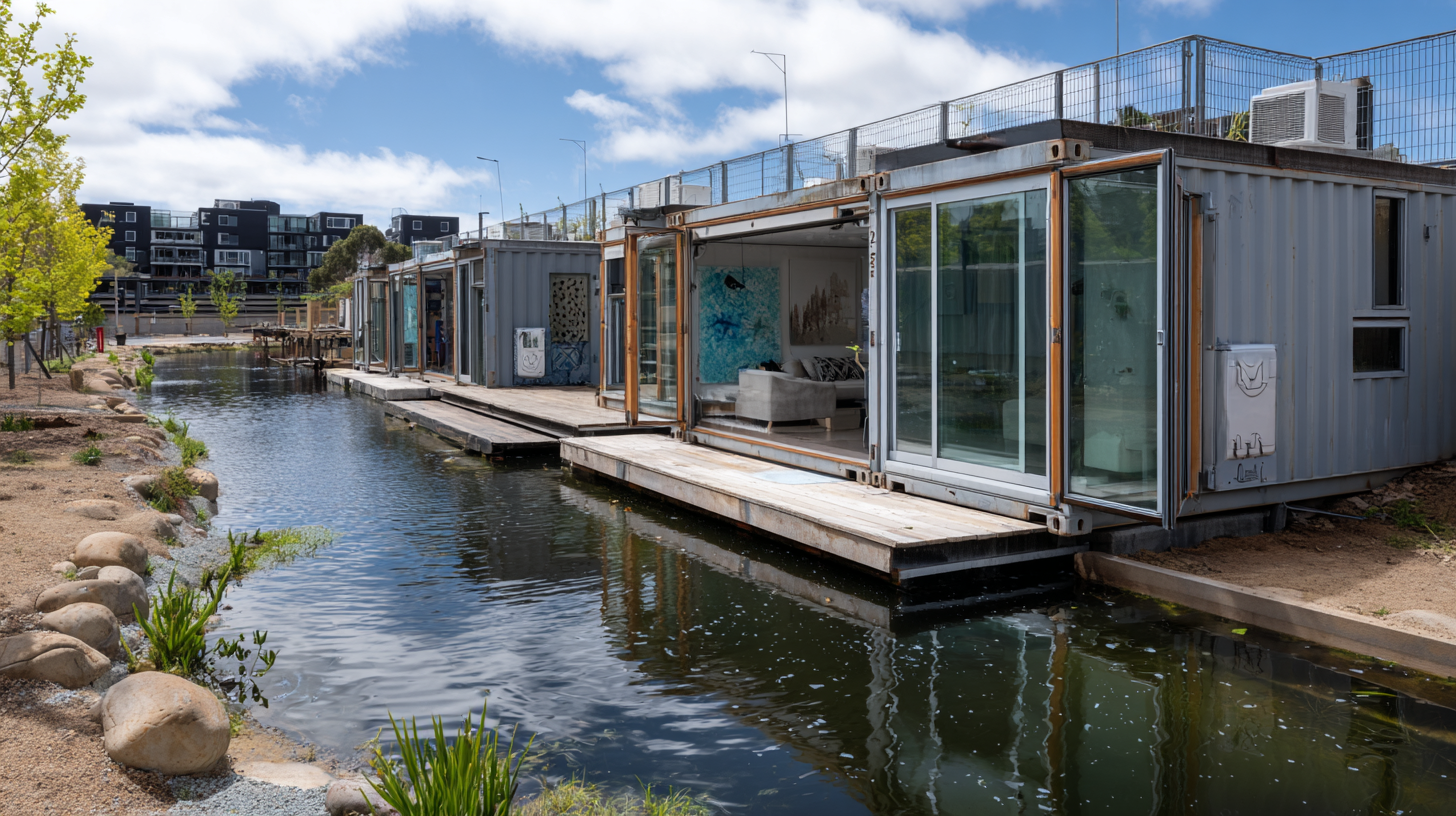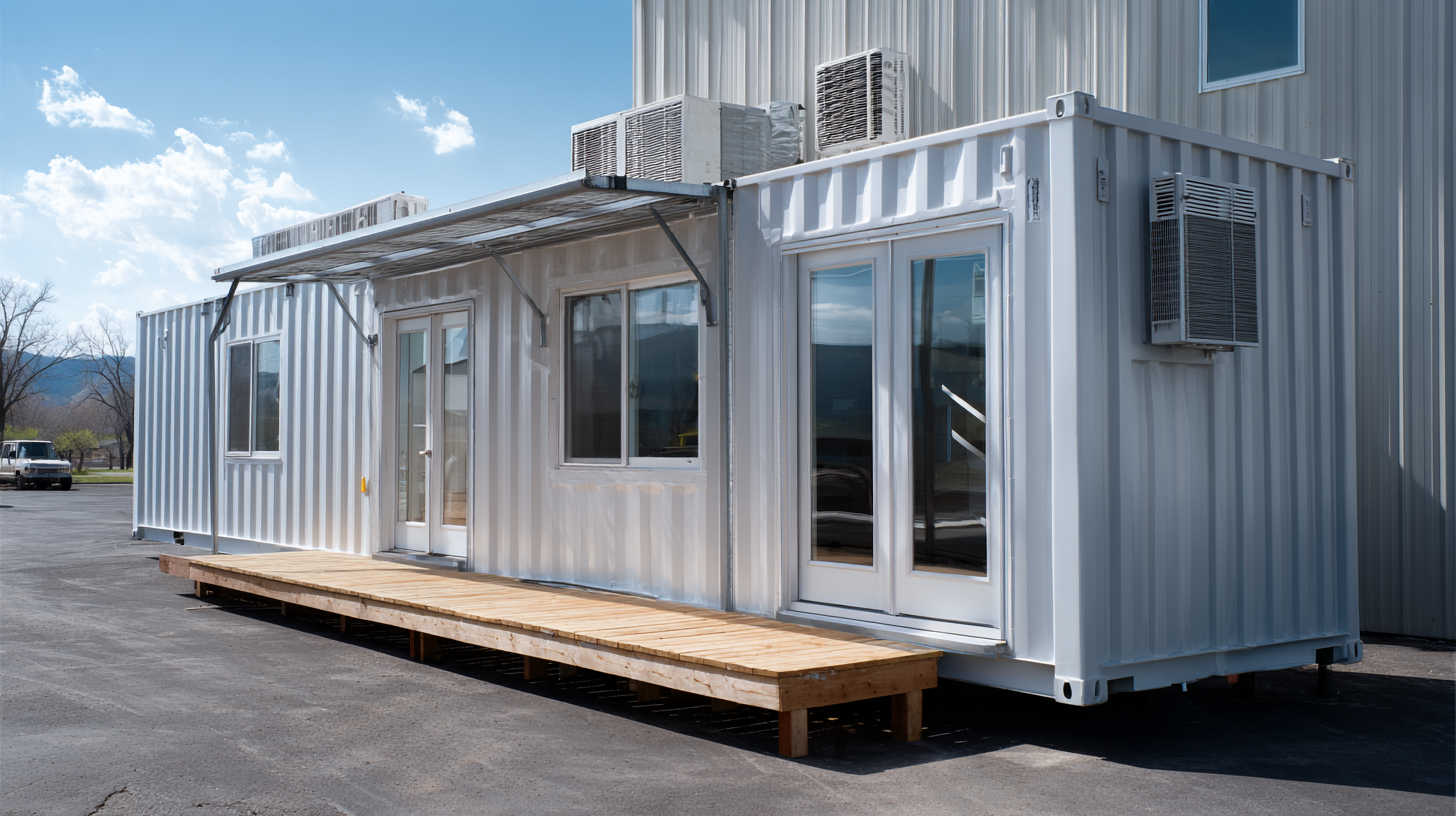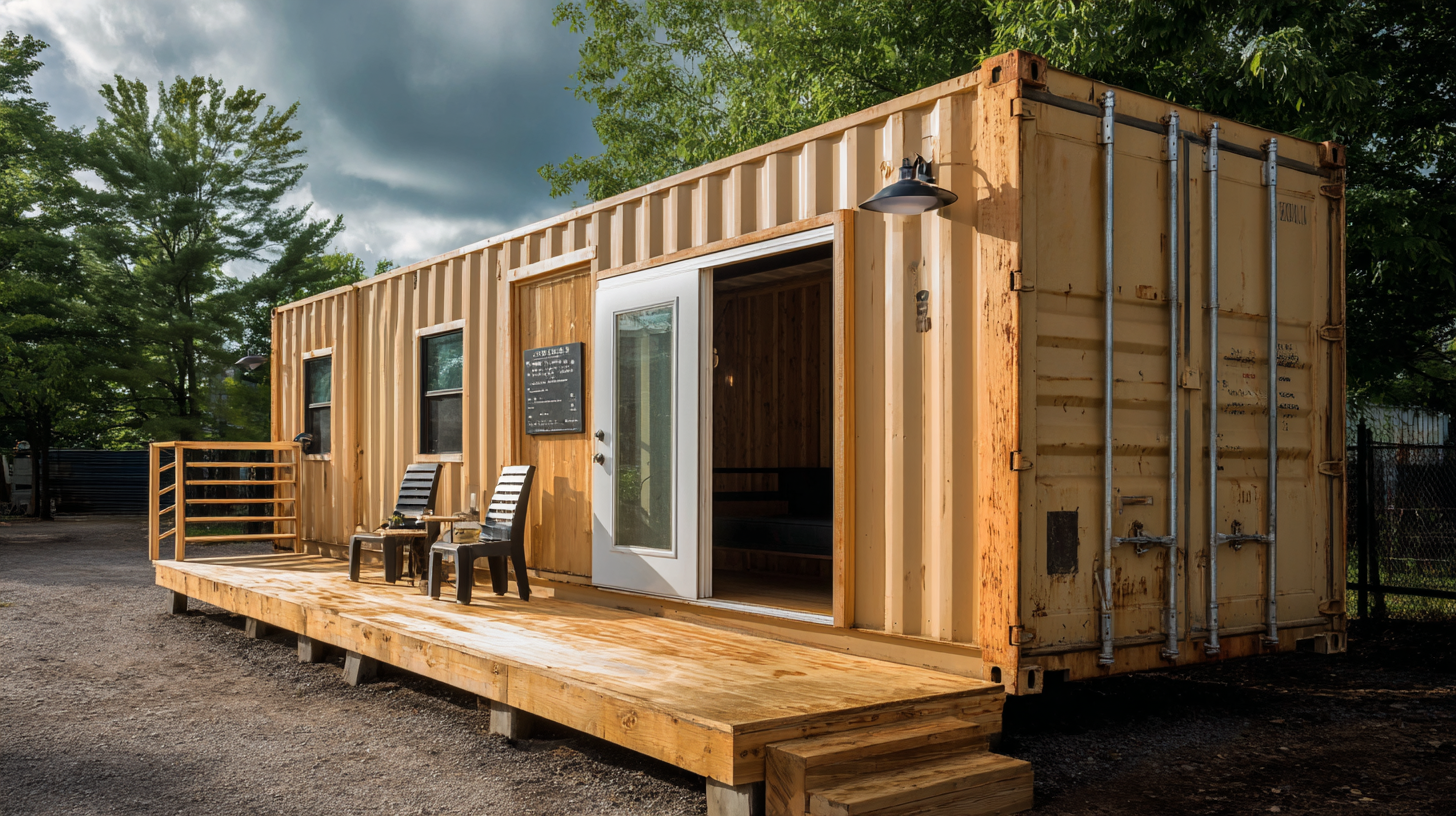In recent years, the shift towards sustainable living has gained momentum, prompting individuals and communities to seek innovative solutions that minimize environmental impact. One such solution is the use of small shipping containers, which are rapidly emerging as a practical and eco-friendly alternative for various applications, including housing, offices, and storage.

According to a 2020 report by the International Shipping Federation, over 50 million shipping containers are in circulation globally, with a significant number falling into disuse. Transforming these small shipping containers into functional living spaces not only reduces waste but also promotes resource efficiency.
Furthermore, a study by the World Economic Forum suggests that repurposing containers can lower renovation costs by 30-40% compared to traditional building methods, while also minimizing energy consumption. This exploration into the benefits of small shipping containers highlights their potential as a cornerstone for sustainable living solutions in today's increasingly urbanized society.
The rise of small shipping containers as a solution for sustainable living is becoming increasingly prominent, particularly in urban environments. In cities like Chicago, innovative designs are transforming these containers into functional spaces for housing and retail. This shift not only addresses the growing demand for affordable living options but also embraces eco-friendly practices.
Recent studies indicate that container homes can significantly reduce construction waste and energy consumption, aligning with the growing trend of sustainable development. For instance, a report on container housing reveals that these structures can be completed in a fraction of the time and cost compared to traditional homes, offering a practical alternative for city dwellers.
 Moreover, initiatives like The Habitainer in Bengaluru are showcasing how shipping containers can be repurposed into solar-powered homes, proving that sustainability can intersect with modern living. The trend is supported by data suggesting that the market for eco-friendly housing solutions is projected to grow significantly, driven by an increasing awareness of environmental issues and a demand for innovative solutions. As urban populations continue to rise, it’s clear that small shipping containers will play a crucial role in creating adaptable and sustainable living spaces that meet the needs of diverse communities.
Moreover, initiatives like The Habitainer in Bengaluru are showcasing how shipping containers can be repurposed into solar-powered homes, proving that sustainability can intersect with modern living. The trend is supported by data suggesting that the market for eco-friendly housing solutions is projected to grow significantly, driven by an increasing awareness of environmental issues and a demand for innovative solutions. As urban populations continue to rise, it’s clear that small shipping containers will play a crucial role in creating adaptable and sustainable living spaces that meet the needs of diverse communities.
Small shipping containers have emerged as a revolutionary solution in the quest for sustainable living, primarily due to their cost-effectiveness. By repurposing these containers into living spaces, homeowners can significantly reduce housing expenses—often by as much as 50%. Traditional housing involves substantial costs, including land acquisition, construction materials, and labor. In contrast, small shipping containers provide a more affordable alternative, as they can be purchased relatively inexpensively and require minimal renovation to become livable.
Moreover, the low maintenance costs associated with shipping containers play a crucial role in their appeal. Once converted, they typically need fewer repairs than conventional homes due to their durable steel construction. Homeowners can enjoy reduced utility expenses as well, given the smaller footprint that often leads to lower energy usage. As more people seek sustainable living solutions, small shipping containers not only offer economic benefits but also promote a lifestyle that aligns with environmental consciousness, making them an appealing option for a growing number of individuals.

Shipping container homes have emerged as a revolutionary solution for sustainable living, boasting an impressive 90% lower carbon footprint compared to traditional housing. This significant reduction in environmental impact arises from the abundant availability of repurposed containers and their energy-efficient design. By utilizing materials that are already in circulation, this innovative housing option minimizes the need for new construction resources, thus preserving natural habitats and reducing pollution associated with the production of conventional building materials.
When considering transitioning to a shipping container home, it’s essential to focus on energy efficiency. Tips for achieving this include installing solar panels and high-quality insulation to make the most of natural resources while reducing reliance on non-renewable energy. Additionally, consider incorporating rainwater harvesting systems to utilize renewable water sources, further enhancing your sustainability efforts.
Another important aspect of living in shipping container homes is the potential for modular design. This flexibility allows you to customize and expand your living space as needed, promoting a more efficient use of land and resources. Choosing eco-friendly finishes and furnishings can further reduce your home's ecological footprint, making it a holistic approach to sustainable living.
| Feature | Traditional Home | Shipping Container Home |
|---|---|---|
| Carbon Footprint (CO₂ emissions/year) | 8,000 kg | 800 kg |
| Energy Efficiency Rating | 65% | 90% |
| Construction Time | 6-12 months | 2-3 months |
| Recyclability | 20% | 100% |
| Cost (average) | $250,000 | $50,000 |
The rise of small shipping containers as sustainable living solutions has unveiled a
plethora of innovative design techniques aimed at maximizing space and efficiency.
According to a recent report by the Container Housing Association, the compact design of shipping containers
allows for a significant reduction in square footage while maintaining functionality. For instance, the report noted that
an average shipping container home uses about 50% less energy for heating and cooling compared to
conventional homes, which aligns perfectly with eco-friendly living initiatives.
Moreover, creative interior layouts have emerged as a vital component in optimizing limited space within these containers.
Designers are increasingly utilizing multi-functional furniture and vertical storage solutions
to enhance the usability of each square inch. A study from the National Association of Home Builders revealed
that homes of under 400 square feet, including container homes, can be designed
to comfortably accommodate all necessary living amenities while fostering a minimalist lifestyle. This not only promotes
sustainable living but also appeals to a growing demographic seeking to downsize
and reduce their environmental footprint.
The use of modular shipping containers in community development is transforming neighborhoods into sustainable living solutions. These versatile structures not only provide affordable housing but also foster economic growth by accommodating pop-up retail spaces and communal areas. In cities like Chicago, the innovation of shipping containers is reshaping urban landscapes, allowing space for eco-friendly businesses and collaborative community initiatives. Such developments encourage local entrepreneurship while meeting housing demands, ultimately creating resilient neighborhoods.
Moreover, countries like the UK are also leveraging shipping containers to address housing crises. By repurposing these containers into homes, architects are designing affordable living spaces that integrate seamlessly into communities. This approach exemplifies how sustainable strategies can revitalize urban areas and empower residents. As communities embrace modular container solutions, they not only address immediate housing needs but also lay the groundwork for long-term sustainability and resilience in urban development.


